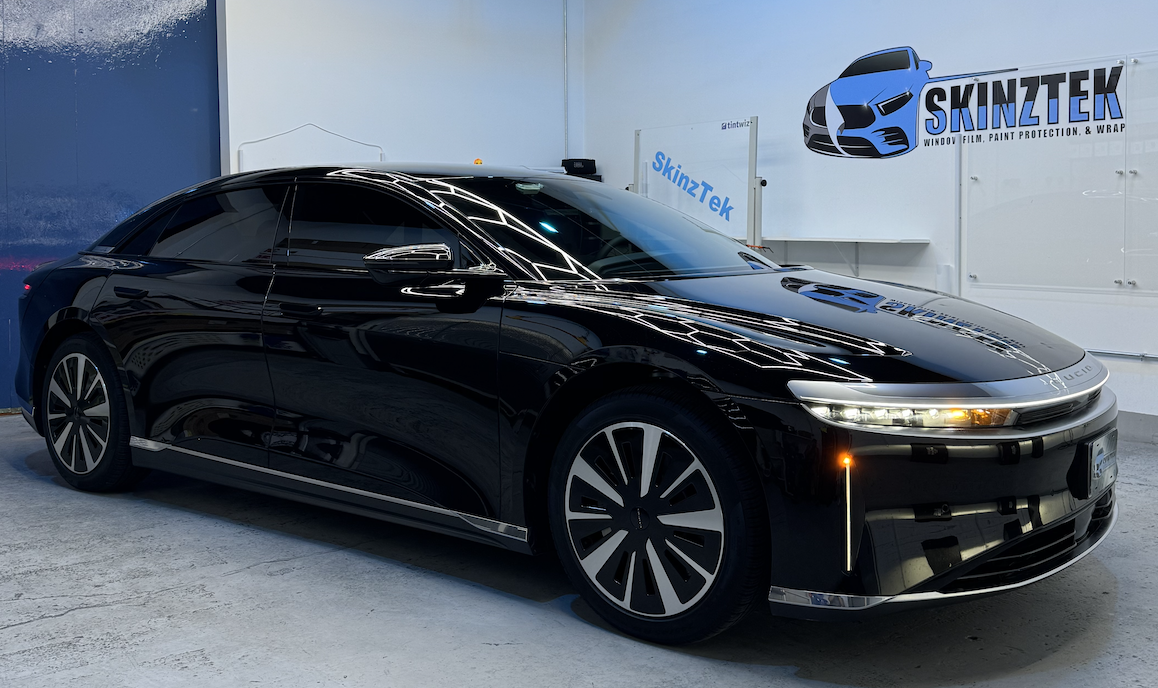Protecting your car’s paint in high-impact areas like the hood, front bumper, and doors is a must, especially in Chicago’s bustling streets where daily wear and tear is constant. Ceramic coating and Paint Protection Film (PPF) are two popular options, each with unique benefits. But when it comes to high-traffic areas on your vehicle, combining them creates an unbeatable defense. In this guide, we’ll break down how ceramic coating and PPF each protect your car’s most vulnerable zones, and why a dual approach may be the best solution.

Understanding Ceramic Coating: A Shield Against Dirt and UV Rays
Ceramic coating provides a slick, glossy layer that repels dirt, water, and harmful UV rays. This transparent coating bonds with the paint to create a smooth surface that makes cleaning a breeze, which is especially helpful on the hood and doors, where grime and dust tend to accumulate. Ceramic coating is hydrophobic, meaning water and road contaminants slide off easily, reducing the risk of water spots, bird droppings, and dirt bonding to the surface.
However, ceramic coating is more about maintaining shine and resisting environmental damage rather than protecting against physical impacts. In areas like the front bumper and hood, where rock chips, gravel, and debris are common, ceramic coating alone isn’t always enough. This is where PPF comes in, offering a thicker, more durable layer that guards against physical hazards.
Why PPF is Essential for Impact-Prone Areas
Paint Protection Film (PPF) is a thick, clear film specifically designed to absorb impacts, making it perfect for high-traffic zones like the front bumper, hood, and side mirrors. PPF’s self-healing properties mean minor scratches and scuffs can “heal” with exposure to heat, keeping these vulnerable areas looking like new. With PPF in place, you’re adding a physical barrier between your car’s paint and potential hazards on the road, from kicked-up gravel to accidental bumps in tight parking spots.
For high-impact areas, especially on the front end of your vehicle, PPF offers superior protection over ceramic coating alone. However, the downside is that PPF doesn’t offer the same hydrophobic effect or glossy shine that ceramic coating does. This is why combining the two on specific areas of your car provides the best of both worlds.
The Dynamic Duo: Combining Ceramic Coating and PPF for Maximum Protection
By combining ceramic coating and PPF on high-traffic zones, you give your car both a physical shield and a glossy, low-maintenance finish. Here’s how this dual-layer protection works in specific areas:
1. Front Bumper: The Armor Against Rock Chips and Road Debris
The front bumper is a high-risk area for rock chips, scratches, and bug splatters. Applying PPF here creates a thick, impact-resistant layer that absorbs the damage instead of the paint. On top of that, ceramic coating over the PPF adds a slick, hydrophobic surface that prevents bug residue, dust, and road grime from sticking. Together, they protect your bumper from physical damage and keep it cleaner for longer, saving you time and effort on upkeep.
2. Hood: A Target for Debris and Sunlight
The hood is exposed to both physical impacts and sunlight, which can lead to paint fading over time. A layer of PPF on the hood helps protect against chips and dings from road debris, while the ceramic coating on top keeps the surface glossy and shielded from UV rays. This combination preserves the look of your car while also keeping the hood easier to clean, repelling water, dirt, and contaminants with ease.
3. Doors: Defending Against Scratches and Daily Wear
Car doors, especially in tight parking spots or high-traffic areas, face frequent minor scrapes and dings. Applying PPF to the lower sections of doors protects them from scuffs, scratches, and even rogue shopping carts. Adding ceramic coating on top keeps the door panels looking polished and helps prevent dirt and grime from bonding to the surface, so even after a day in Chicago’s busy streets, your doors look fresh.
4. Side Mirrors and Headlights: Enhanced Clarity and Durability
Side mirrors and headlights are also high-impact areas that benefit from a dual-layer approach. PPF helps prevent chips and scratches, which are common on these exposed surfaces. A ceramic coating on top keeps them clear, making it easier to see and improving headlight brightness by preventing dirt buildup. This combined protection ensures these essential parts remain functional and looking sharp.
Why Both Solutions Work Best Together for High-Traffic Areas
When used in tandem, ceramic coating and PPF provide a tailored solution for high-impact areas. PPF absorbs the brunt of physical impacts, while ceramic coating adds a glossy, hydrophobic layer that makes cleaning easier and helps repel grime and contaminants. This combination offers:
- Enhanced durability against scratches, chips, and environmental damage
- Improved aesthetics with a high-gloss, easy-to-clean finish
- Increased UV protection to prevent fading in areas exposed to sunlight
For Chicago drivers, where the roads are bustling and the seasons are harsh, having both PPF and ceramic coating on high-traffic areas like the bumper, hood, and doors ensures your car stays in top shape through all conditions.
Conclusion
In high-traffic areas prone to daily damage, ceramic coating and PPF work together to provide superior protection and maintain a sleek, polished look. By combining these solutions, you get the impact resistance of PPF with the shine and hydrophobic benefits of ceramic coating. At SkinzTek, we specialize in customizing this dual approach to meet your vehicle’s specific needs, ensuring maximum protection for your high-impact areas. Contact us today at (312)261-0555 to learn how ceramic coating and PPF can give your car unbeatable defense against Chicago’s roads and weather.
